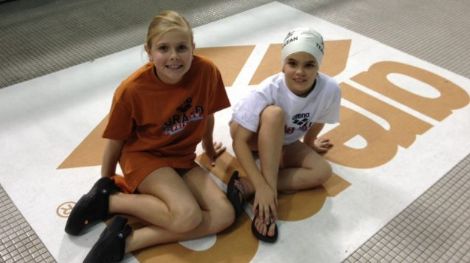THE 8 SWIM PARENTS YOU SEE AT YOUR LOCAL SWIM MEETS (Swim Swam)
May 23, 2014Published: May 22, 2014
Here are 8 swim parents that you have probably encountered at your local swim meet.
Olivier Poirier-Leroy is a former national level swimmer based out of Victoria, BC. In feeding his passion for swimming, he has developed YourSwimBook, a powerful log book and goal setting guide made specifically for swimmers. Sign up for the YourSwimBook newsletter (free) and get weekly motivational tips by clicking here.
There’s at least one at every swim meet.
That parent.
The one you purposely avoid, the one you rue having to make small talk with. This parent comes in many forms and shapes, and not only is a parent for someone on another team, but is also often a parent from your club. Sometimes this parent is you.
While some of the following swim parent stereotypes may infuriate and annoy us, they also provide some amusement and entertainment when our own kids aren’t in the pool.
Here are 8 different swim parents that grace the decks at our local swim meets–
1. Cpt. Obvious. Exuberant, loud and shrill, this parent’s version of cheering runs the gamut of things that are all too apparent—
“Pull harder!”
“Kick harder!”
“Swim harder! Swim faster!”
On behalf of swimmers (and nearby spectators) everywhere: Uh, yeah, thanks. Note that when stating the obvious volume is key and necessary to earn this ironic title. Sometimes a simple “Go!” is more effective than “Pull harder than your contemporaries in the lane next to you who also appear to be swimming at a rapid pace in the hopes of gaining same objective as you!”
2. The Chin Hair Puller. Quiet, thoughtful and analytical, this parent is quietly judging, counting, noting, judging, always judging, but keeping their thoughts to themselves. They know their kids’ competition splits and stroke rates by heart and are quietly plotting the rest of their kid’s season while the rest of us are just wondering when that snack tray is going to make the rounds again. Look for a copy of Sun Tzu’s “Art of War” nearby.
3. Ari Gold. This parent is part authority figure, part business manager. They know for a fact that their kid is going to the Olympics. Which one? All of them. They have one eye on their smartphone seeking out prospective endorsement deals and the other on potential areas where the brand (a.k.a. the product, the money, the swimmer) can vertically integrate. The parent-agent is frequently locked in a daydream of the potential millions their 7 year old is bound to make.
4. Mr. Positivity. Even though their kid just had the worst swim of their life, this parent is so aghast at the thought of his or her kid losing self-confidence that they will sugar coat it until the very end. “It’s okay Timmy, no one saw your suit come off! Or your DQ! And I am sure that no one would ever to think about posting the video on social media! You’re still my sugary honey bunny to me! Love you!” Positivity is good and great, but sometimes levity instead of faux optimism can be just what is needed to defuse a crappy swim.
5. The Shrieker. Otherwise calm and composed, this swim parent seems to lose all sense of dignity and shame the moment their child hits the water. This shrieking is usually on full and slightly embarrassing display when the athlete re-watches their race later on a friend’s iPhone, insuring the well being and use of mute buttons everywhere.
6. The Tomato. It’s understandable—it’s difficult not to get wrapped up in the awesome intensity that is a kid swimming laps back and forth. But for the tomato, this face-exploding experience borders on evidence for mandatory anger management. The rage materializes in a vein-popping redness that causes sunburns at a distance of ten feet, severe burns within 3 feet. Approach with caution if child has swum below expectations. Is a known cause of jeez-it’s-only-a-sport-man-itis with passerby.
7. The Nail-Chewer. It’s amazing this parent still has thumbs. Or hands, really. Quiet and reserved, they extoll their anxiety via chewing what is left of their thumbs. (Advanced nail-chewers typically graduate to the pinky and index fingers when the thumb nail is “not in the game.”)
8. The Stopwatch. A coach’s nightmare. Will generally walk away after their kids’ swim mumbling about how they coulda, woulda, shoulda coached their kid to a better time. Seems to know better than coach, often gives contradictory advice, and is frequently caught peering over coach’s shoulder at stroke rate, splits and so on for not only his or her swimmer, but also the competition.
Posted by mio vasic. Posted In : Parent Philosophy

